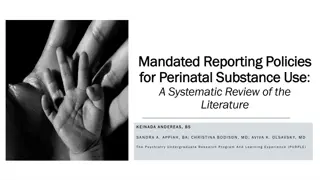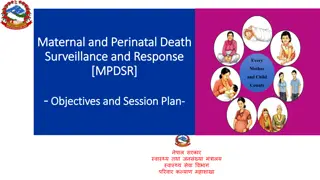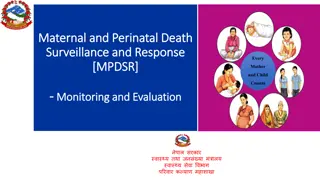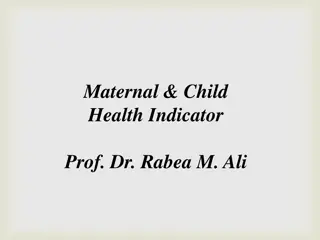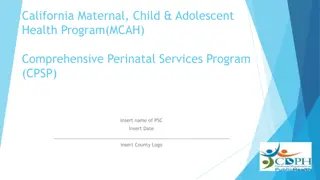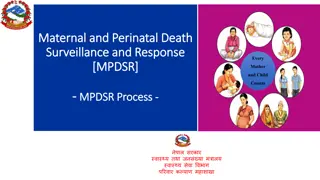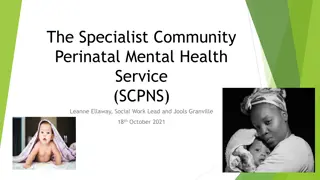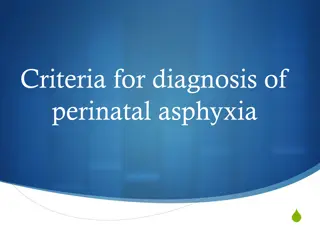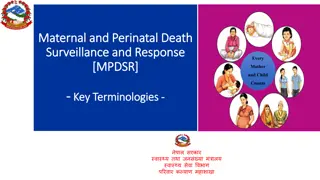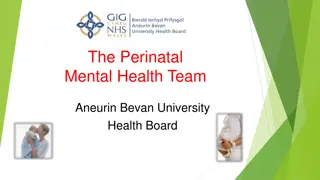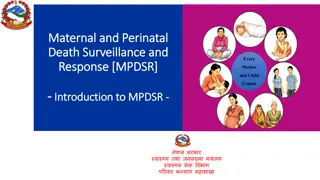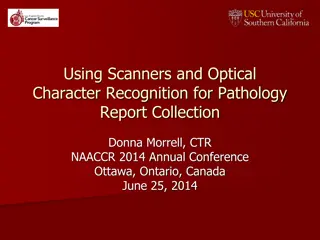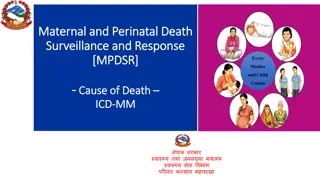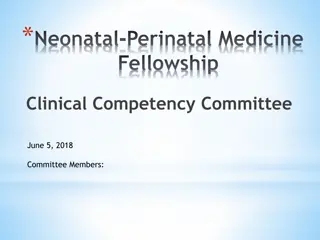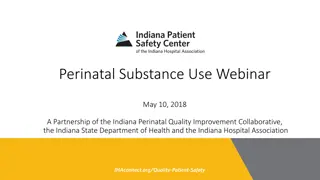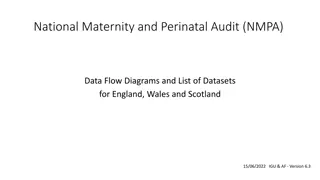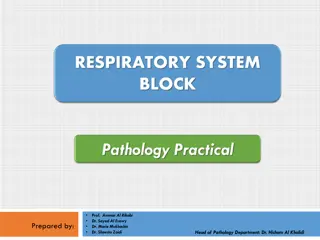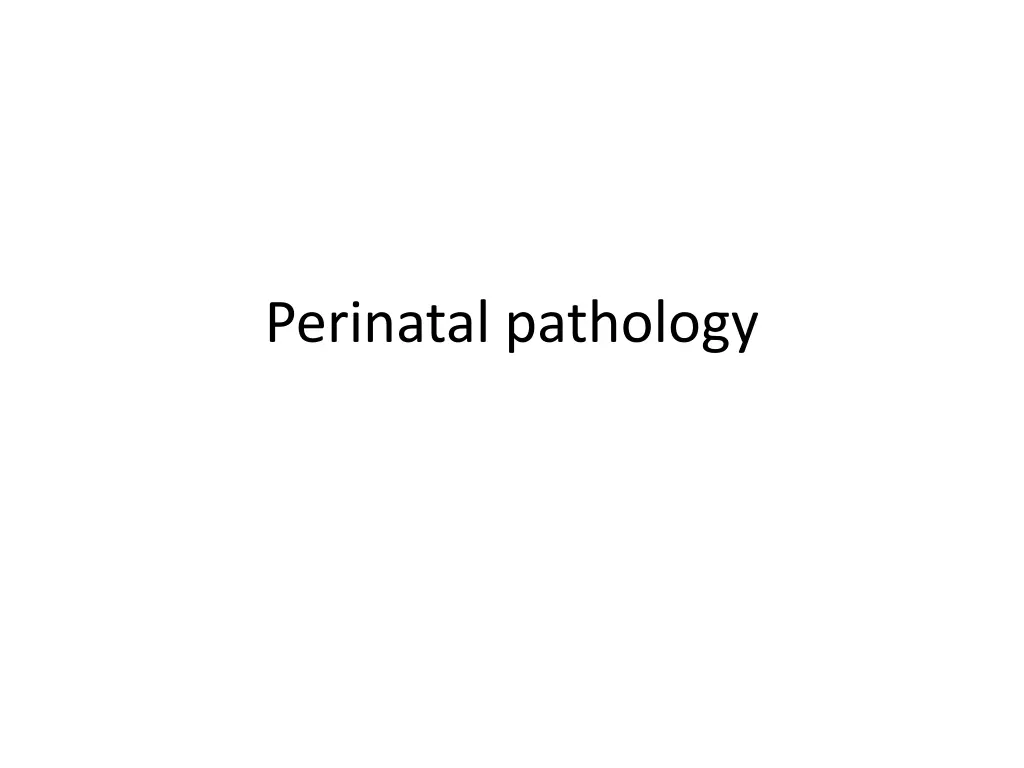
Understanding Perinatal Pathology and Its Impact on Neonatal Health
Explore the world of perinatal pathology, which delves into the study of fetal and newborn health, covering topics such as prematurity, intrauterine disorders, labor injuries, and postnatal adaptation issues. Learn about the different time periods in neonatal care and the definitions related to perinatal pathologist roles and responsibilities.
Download Presentation

Please find below an Image/Link to download the presentation.
The content on the website is provided AS IS for your information and personal use only. It may not be sold, licensed, or shared on other websites without obtaining consent from the author. If you encounter any issues during the download, it is possible that the publisher has removed the file from their server.
You are allowed to download the files provided on this website for personal or commercial use, subject to the condition that they are used lawfully. All files are the property of their respective owners.
The content on the website is provided AS IS for your information and personal use only. It may not be sold, licensed, or shared on other websites without obtaining consent from the author.
E N D
Presentation Transcript
Plan - Prematurity of fetus - Intrauterine growth retardation - Causes of intrauterine disorders - Intrauterine infection - Fetal hydrops Damage of fetus during labor - Asphyxia - Syndrom of meconium aspiration - Hypoxic-ischemic encephalopathia Labor injury - Injury of soft tissue of scull - Fractures of scull - Intracranial hemorrhage Disorders of postnatal adaptation - Hyaline membrane disease - Bronchopulmonary dysplasia - Retinopathy of pre-term - Newborn sepsis Sudden infant death syndrome Major perinatal definitions Prematurity of fetus and pathology before labor
Definition Perinatal pathology is the study of the fetus and the newborn; a perinatal pathologist is concerned with normal fetal development, congenital abnormalities, and problems during pregnancy, labor, and early neonatal life.
Time periods (1) the neonatal period (the first 4 weeks of life), (2) infancy (the first year of life), (3) age 1 to 4 years, and (4) age 5 to 14 years.
Definitions Full-term pregnancy is 38-42 weeks Intrauterine period fetus can be endangered by hypoxia, growth development disorders and malformations. Cause can be the fetus itself, umbilical cord, placenta and mother Labor fetus is endangered by labor asphyxia, labor injury Early neonatal period from 1stday to 1 week. Prenatal death can be intrauterine (antenatal) and during labor (intranatal) Abortus death of fetus in early stage of pregnancy, mass up to 500g, gestation age up to 22 weeks.
Malformations, disruptions, deformations, sequences, and syndromes Malformations represent primary errors of morphogenesis, in which there is an intrinsically abnormal developmental process. Disruptions result from secondary destruction of an organ or body region that was previously normal in development; thus, in contrast to malformations, disruptions arise from an extrinsic disturbance in morphogenesis. Deformations, like disruptions, also represent an extrinsic disturbance of development rather than an intrinsic error of morphogenesis. A syndrome is a constellation of congenital anomalies, believed to be pathologically related.
Amnionic bands (disruption)
Prematurity of fetus and pathology before labor - Disorders of prematurity - Intrauterine growth retardation - Causes of intrauterine disorders - Intrauterine infection - Fetal hydrops
Disorders of Prematurity Infants born before normal gestation period weight 2300 gm and term 34 weeks of gestation respiratory distress syndrome [RDS] transient hyperbilirubinemia Therefore, a system of classification that takes into account both birth weight and gestational age has been adopted. Based on birth weight, infants are classified as being Appropriate for gestational age (AGA) Small for gestational age (SGA) Large for gestational age (LGA)
Disorders of Prematurity Prematurity, defined by a gestational age less than 37 weeks, is the second most common cause of neonatal mortality, behind only congenital anomalies. Preterm premature rupture of placental membranes (PPROM): Intrauterine infection: Uterine, cervical, and placental structural abnormalities
Perinatal Infections two primary routes transcervically (also referred to as ascending) or transplacentally (hematologic). Occasionally, infections occur by a combination of the two routes in that an ascending microorganism infects the endometrium and then the fetal bloodstream via the chorionic villi.
TORCH T Toxoplasmosis O Other infections (Syphilis, varicella zoster, Hepatitis-B) R Rubella C Cytomegalovirus H Herpes simplex t.2
Damage of fetus during labor - Asphyxia - Syndrom of meconium aspiration - Hypoxic-ischemic encephalopathia
Asphyxia Perinatal asphyxia (also known as neonatal asphyxia or birth asphyxia) is the medical condition resulting from deprivation of oxygen to a newborn infant that lasts long enough during the birth process to cause physical harm.
Cause of asphyxia Antepartum causes Inadequate oxygenation of maternal blood due to hypoventilation during anesthesia, heart diseases, pneumonia, respirator failure Low maternal blood pressure due to hypotension e.g. compression of vena cava and aorta, excess anaesthesia. Premature separation of placenta Placental insufficiency Intra partum causes Inadequate relaxation of uterus due to excess oxytocin Prolonged delivery Knotting of umbilical cord around the neck of infant
Diagnostics Score 0 1 2 Heart rate Absent Less than 100 beats per minute More than 100 beats per minute Respiration Absent Slow, irregular; weak cry Good; strong cry Muscle tone Limp Some flexing of arms and legs Active motion Reflex Absent Grimace Grimace and cough or sneeze Color Blue or pale Body pink; hands and feet blue Completely pink
Treatment A= Establish open airway: Suctioning, if necessary endotracheal intubation B= Breathing: Through tactile stimulation, PPV, bag and mask, or through endotracheal tube C= Circulation: Through chest compressions and medications if needed D= Drugs: Adrenaline .01 of .1 solution Hypothermia treatment to reduce the extent of brain injury Epinephrine 1:10000 (0.1-0.3ml/kg) IV Saline solution for hypovolemia
Syndrom of meconium aspiration Meconium aspiration syndrome (MAS) is defined as respiratory distress in the newborn due to the presence of meconium in the trachea. It occurs exclusively in the immediate neonatal period. Soon after birth, infants present with respiratory distress (tachypnoea, chest retractions, and hypoxia). Some may be asymptomatic and apparently vigorous at birth, and develop severe respiratory distress hours later.
Periventricular leukomalacia is a form of white-matter brain injury, characterized by the necrosis of white matter near the lateral ventricles Affects pre-term and very low birth-weight infa Clinical picture exhibit motor control problems, developmental delays, vision deficits, seizures, and patients often develop cerebral palsy or epilepsy later in life.
Hypoxic-ischemic encephalopathia Neonatal encephalopathy (NE), previously known as neonatal hypoxic-ischemic encephalopathy (neonatal HIE or NHIE), is defined as a encephalopathy syndrome with signs and symptoms of abnormal neurological function, in the first few days of life in an infant born after 35 weeks of gestation. Difficulty initiating and maintaining respirations, a subnormal level of consciousness, and associated depression of tone, reflexes, and possibly seizures. Encephalopathy is a nonspecific response of the brain to injury which may occur via multiple methods, but is commonly caused by birth asphyxia, leading to cerebral hypoxia.
Labor injury - Injury of soft tissue of scull - Fractures of scull - Intracranial hemorrhage
Disorders of postnatal adaptation - Hyaline membrane disease - Bronchopulmonary dysplasia - Retinopathy of pre-term - Newborn sepsis
Neonatal Respiratory Distress Syndrome (RDS) There are many causes of respiratory distress in the newborn, including excessive sedation of the mother, fetal head injury during delivery, aspiration of blood or amniotic fluid, and intrauterine hypoxia brought about by coiling of the umbilical cord about the neck.
Morphology The lungs are distinctive. Normal size, they are solid, airless, and reddish purple, similar to the color of the liver, and they usually sink in water. Microscopically, alveoli are poorly developed, and those that are present are collapsed. When the infant dies early in the course of the disease, necrotic cellular debris can be seen in the terminal bronchioles and alveolar ducts. The necrotic material becomes incorporated within eosinophilic hyaline membranes lining the respiratory bronchioles, alveolar ducts, and random alveoli. The membranes are largely made up of fibrin. In infants who survive more than 48 hours, reparative changes occur in the lungs.
Sepsis In newborns there are two common types of sepsis: early onset (up to 7 days after birth) and late onset (after 7 days after birth) Risk factors: - premature birth - low weight - premature rupture of membranes - chorioamnionitis - long stay in the hospital Etiology GCB E.Coli Listeria monocytogenes

